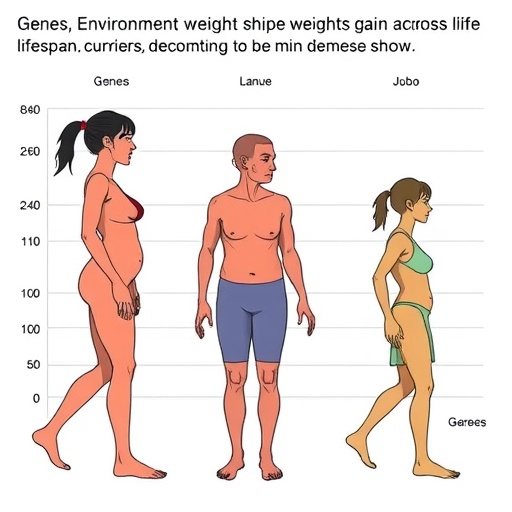A groundbreaking cohort study published in JAMA Psychiatry reveals a profound connection between sexual assault and the increased likelihood of developing functional somatic disorder (FSD), a complex condition characterized by persistent physical symptoms spanning multiple bodily systems. These debilitating symptoms often persist despite the absence of identifiable organic causes, making FSD a challenging diagnosis that severely impairs quality of life. The current research emphasizes the intricate biopsychosocial factors at play, situating sexual assault as a potent risk factor catalyzing the onset of FSD.
Functional somatic disorder encompasses a spectrum of symptoms including chronic pain, fatigue, gastrointestinal disturbances, and cognitive difficulties, which remain largely unexplained by conventional medical evaluations. This study spotlights how survivors of sexual violence may be particularly vulnerable, revealing an alarming correlation between their traumatic experiences and subsequent emergence of FSD. The research, drawing from longitudinal cohort data, extends our understanding of trauma’s far-reaching influence beyond psychological sequelae, implicating adverse physical health outcomes mediated by complex neurobiological and psychosomatic pathways.
By conducting a meticulous pooled analysis, the researchers accounted for the variability inherent in different FSD subtypes. Despite some limitations posed by small case numbers in certain diagnostic categories, the aggregated data robustly associates sexual assault history with significantly heightened risk across multiple FSD presentations. This finding underscores the multifaceted nature of trauma’s imprint on somatic health, suggesting that sexual violence acts not only as a psychological insult but also as a biological stressor precipitating chronic functional ailments.
The pathophysiology underlying FSD involves dysregulation in central nervous system processing, altered hypothalamic-pituitary-adrenal (HPA) axis functioning, and heightened systemic inflammation, all of which may be exacerbated by the neuroendocrine aftermath of traumatic stress. Sexual assault, as an extreme stressor, appears to trigger maladaptive neuroimmune responses that manifest as persistent physical symptoms, mediated by a disruption of brain-body communications. This biopsychosocial framework represents a pivotal advancement in conceptualizing the genesis of FSD among trauma survivors.
The findings hold significant implications for clinical practice and public health policy. Early identification of sexual assault survivors at risk for FSD could inform tailored intervention strategies that integrate trauma-informed care principles with somatic symptom management. Current approaches, often fragmented between mental health and somatic symptom treatment paradigms, may need realignment to address the intertwined biological and psychological dimensions revealed by this study. Such integrated models stand to improve prognosis and reduce the extensive disability associated with FSD.
Moreover, the research calls attention to the urgent need for further scientific inquiry into the mechanisms bridging sexual trauma and somatic symptomatology. Longitudinal studies with larger sample sizes could elucidate temporal patterns and causal pathways more definitively. Elucidation of molecular and neuroimmune biomarkers may pave the way for novel therapeutics aimed at mitigating the chronic physiological consequences of sexual assault, enhancing recovery, and restoring function for affected individuals.
On a societal level, the study amplifies the discourse on the enduring health burdens borne by sexual assault survivors, extending vulnerability from psychological trauma to pervasive physical illness. This expanded narrative demands heightened resource allocation for survivor support services, encompassing multidisciplinary approaches that span psychiatry, neurology, immunology, and rehabilitation. Deinstitutionalizing care to remove stigma and promote comprehensive wellness is paramount in addressing this hidden epidemic.
Furthermore, from a research methodology perspective, the use of cohort study designs here affords robust temporal insights into how exposure to sexual assault precedes and predicts the development of FSD. These designs mitigate biases inherent in cross-sectional analyses, allowing for parsing out confounding variables and strengthening causal inferences. The multi-system involvement documented also justifies future integrative biomedical and psychological surveillance frameworks in trauma research.
Clinicians are therefore encouraged to incorporate detailed trauma histories in the assessment of patients presenting with chronic somatic complaints. Recognition of sexual assault as a key risk factor can prompt timely referrals to trauma-specialized care and psychosomatic treatment modalities. In doing so, healthcare providers can bridge the gap between physical and mental health services, fostering holistic patient-centered care that addresses the root causes of functional somatic distress.
Importantly, the data also raise awareness about the limitations of existing diagnostic criteria and treatment protocols for FSD in the context of sexual trauma. Current symptom-focused approaches may overlook the underlying trauma etiology, resulting in suboptimal outcomes. This necessitates refinement of diagnostic frameworks to incorporate trauma history as a core component, alongside symptom evaluation, for a more nuanced understanding and management.
The study also invites reflection on preventative public health strategies aimed at reducing sexual violence itself, recognizing that mitigating trauma incidence will have downstream benefits in lowering FSD prevalence. Multilevel interventions involving education, policy reform, and community engagement are integral to this endeavor and highlight the intersection of social justice with health outcomes.
In sum, this seminal research advances the field by charting a compelling link between sexual assault and functional somatic disorder, illuminating pathways through which trauma translates into chronic physical illness. It calls for a paradigm shift in clinical, research, and policy domains to comprehensively address the long-term biopsychosocial consequences of sexual violence, ultimately aiming to alleviate suffering and improve lives.
Subject of Research: The relationship between sexual assault and the increased risk of developing functional somatic disorder (FSD).
Article Title: Not explicitly provided in the original content.
News Publication Date: Not specified.
Web References: Not provided.
References: (10.1001/jamapsychiatry.2025.3251)
Image Credits: Not provided.
Keywords: Sexual abuse, Somatic cells, Psychiatry, Cohort studies, Diseases and disorders, Symptomatology, Small samples, Risk factors
Tags: biopsychosocial factors in healthchronic pain and sexual violencecognitive difficulties in assault survivorscorrelation between trauma and physical symptomsgastrointestinal disturbances and traumaimplications of sexual violence on physical healthlongitudinal cohort study on traumaneurobiological impact of sexual assaultpsychosomatic pathways in healthquality of life and FSDrisk factors for functional somatic disorderssexual assault and functional somatic disorders





